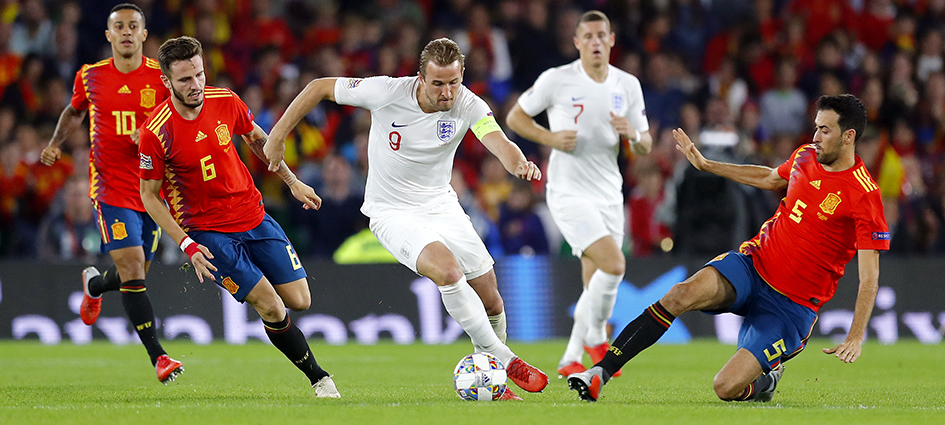
Using televised games to help players learn
- Laura Seth
- 09 January 2019
Laura Seth, FA performance analysis education lead, looks at learning opportunities for young players away from training.
We now live and interact in a digital world where live football – both at home and abroad – as well as a whole host of football-related content is available online and on television.
With the winter months now upon us, weather and breaks for the holidays may compromise the time you have available with your players on the grass. However, this is also an opportunity to look at coaching through a different lens and to see how learning opportunities based on the game can still be provided for players.
Whether it’s watching live football at a ground, on television or highlights packages online, as a coach you have the opportunity to develop fun and engaging off field coaching sessions and activities that can stimulate learning and help to develop game understanding, ownership and responsibility.
Watch an elite team and identify characteristics that make them elite
By encouraging young players to watch and interact with football content on a regular basis, you can encourage regular analytical and problem-solving skills that can be transferred back onto the grass.
Here we'll look at some examples that you can use with players, starting with the Foundation Phase, to facilitate learning and develop analytical skills away from the grass.
Foundation PhaseAt 8-11, players like to admire and imitate older people, they like to share their thoughts and reactions and enjoy working in co-operative environments.
Encourage them to watch a highlights show on TV (Match of the Day, Monday night football, Football League Tonight, Online match highlights), and ask them questions such as the following:
- Pick your three favourite goals and why you have chosen them?
- Which goalkeeper made the best save and why?
- Which players would you select for your team of the week and why?
Alternatively, you could challenge them to watch a live game and, for 15 minutes or so, focus on their favourite player – or a player who plays in their favoured position – and identify two or three things that they did really well that they could then practice in their next training session.
Youth Development PhaseAt 12-16, role models are very influential. Players also like to be set tactical challenges and are capable of problem solving; they like to find their own solutions and value presenting their own ideas.
To facilitate learning and develop analytical skills away from the grass, why not ask players of this age to do the following:
- Watch an elite team (live or on TV) and identify the characteristics that make them elite?
- From this week’s Champions League games/Premier League games, choose your your favourite left back/central midfielder/number 10 and explain why?
- Watch a team that plays with a structured deep defensive block and identify ways they can be broken down, and how goal scoring chances can be created against them?
Professional Development PhaseAt aged 17-21 players are more receptive to taking in information, like self-directed learning, and they want to put their learning into practice.
Here are some more examples that you can use with players of this age to facilitate learning and develop analytical skills away from the grass:
- Watch teams with different systems/styles of play and identify the strengths and weaknesses of the systems. This could then be progressed to identify ways in which the strengths can be nullified and the weaknesses exploited, which can be utilised and put into practice when they come up against teams of similar styles.
- Film games: if you're able to do this, it can offer players the opportunity to review their individual and/or the team’s performance. Challenge them to identify what went well, what they would change for next time, and to utilise their analytical skills to self-reflect.
The tasks could be done individually, in pairs or as part of a small group and enable players to interact with their peer group, enhancing friendships and to develop team cohesion.
With all of the examples above it is important to consider the skills and attributes that you are trying to develop with your players through your on-pitch training sessions, and then to consider how you can create opportunities away from the grass where your players can practice the same skills.
You can follow this up with a conversation with the player at your next training session and then ask them to try and recognise similar scenarios and make the appropriate decision in the training session.
This article was first published in The Boot Room magazine in November 2016.


